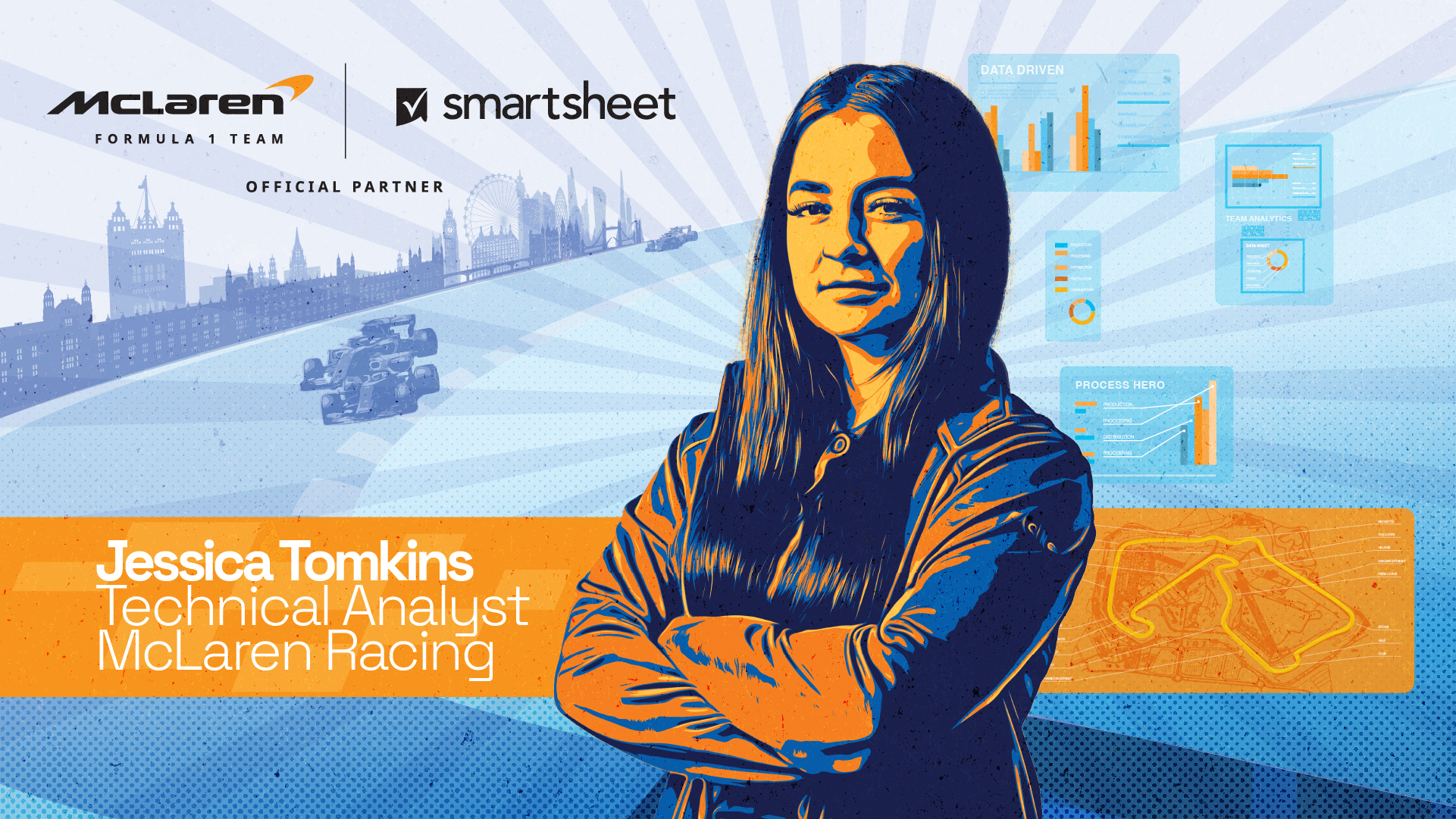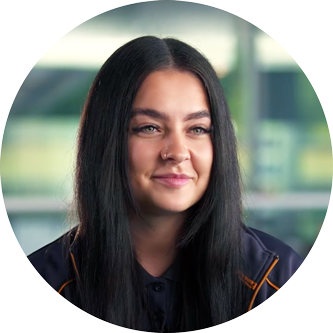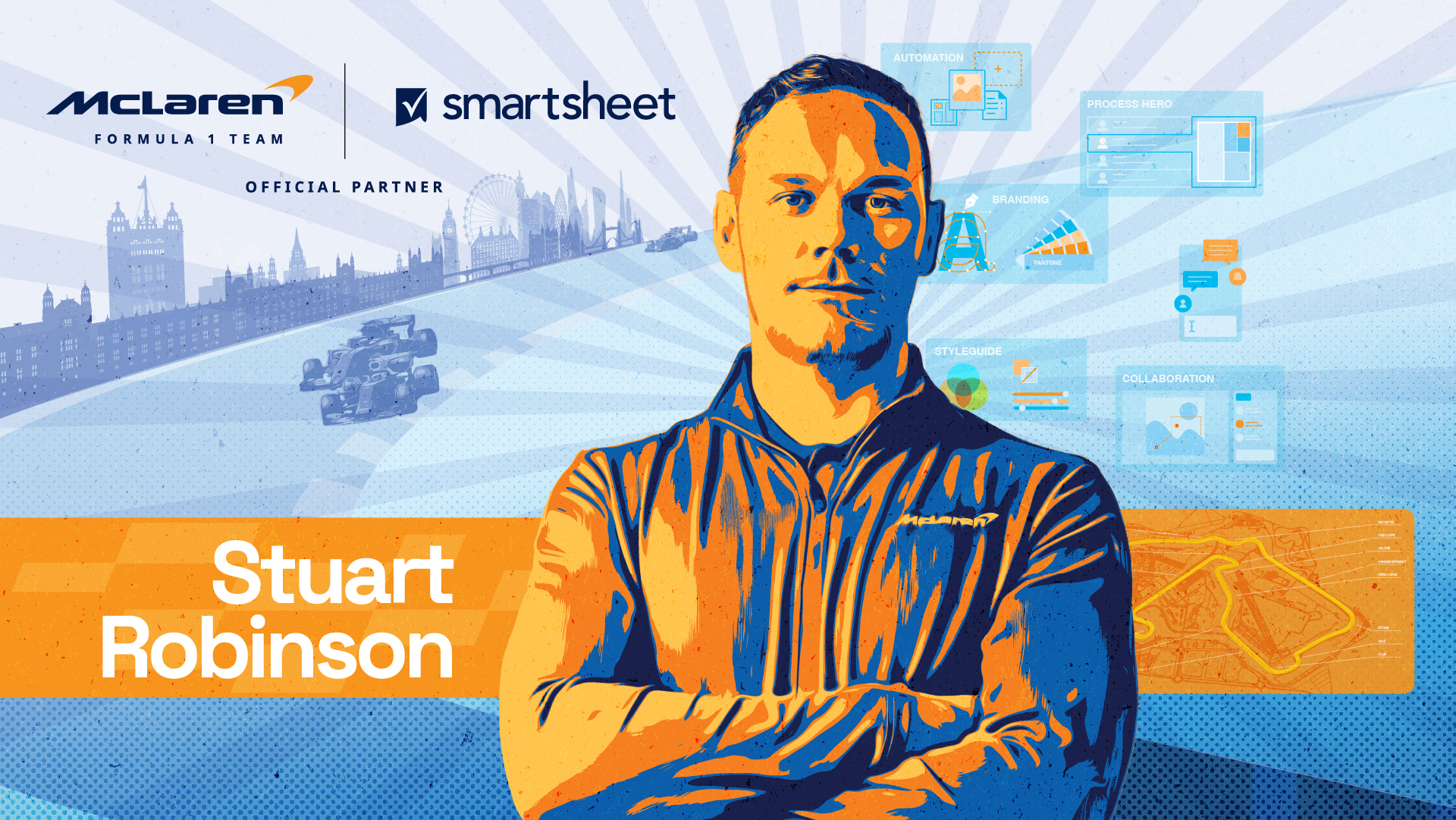July, 2022
Meet Jessica Tomkins: A McLaren Off-Track Hero
Data expert Jessica Tomkins is a Technical Analyst whose role sees her strive to give McLaren a competitive advantage.
We met Jess at McLaren Technology Centre to hear about how her work off-track contributes to on-track success.
Q: Jess, as one of our off-track heroes, can you please tell us about you and your role?
I’m Jess, a Technical Analyst at McLaren racing. I’ve been with McLaren for just under a year, having previously worked as a data analyst.
At McLaren, I work with a variety of departments across the team to help integrate new technical capabilities and help them with their use cases. In a nutshell, my role is all about helping McLaren go faster as a team by utilising the latest technology.
Q: What’s your favourite thing about working at McLaren?
Working as a technical analyst for McLaren is truly unique. The culture is really positive, as we’re all working towards one goal — when we win, we win together.
The atmosphere and speed at which everything happens is incomparable. We get access to some of the latest tools from our partners and rolling that out to bring us a competitive advantage is really exciting. There’s no atmosphere quite like it.
Q: Could you tell us about the process of launching the new F1 car at the start of the season? How was it different in 2022, in light of the Covid-19 pandemic?
The team launch is a major collaborative effort — it involves all the different departments across McLaren, whether that’s the digital department, logistics, the events team, the media team, or external partners. It’s a big task to bring them all together and launch multiple racing series on the same day. We have to really pull together to make sure everything is in place to make the day go smoothly.
Launching in 2022 was understandably quite different for us. It was our first launch back after Covid, and we had virtual space with an online presence to manage, as well as a physical location. We were launching four racing series’ worth of cars, and it was a busy time. But it went really well, which is a great feeling.
Q: What’s the biggest challenge in your role?
I am really lucky to work with so many team members and our technology partners on some of the latest innovations — I have to work hard to prioritise effectively, making sure I match the right solution for the right scenario.
It can definitely be a challenge to find the right solution at the right time to help each department achieve their goals, but we’re always learning and improving how we work as a result, whether that’s collaborating in general or launching a new F1 car or series.
Q: How do having the right tools and processes enable you to drive success and run big events like team launches?
Implementing new tools and solutions for others is a big part of my role — and doing this successfully is really rewarding, because I can see tangibly that I’m making other people’s lives easier! I love seeing new solutions come to life and enabling users to become self-sufficient.
For example, historically, our processes around car launch have been really manual, with various documents being shared between teams. This was time consuming and quite demanding on the team, we really needed a leaner solution that would give us more visibility.
Q: What tools and processes helped you solve that challenge?
Smartsheet has been really beneficial for the team, especially for the team launches. We were able to manage over 800 assets live in sheets and bring a high level of visibility to disparate teams. It’s really streamlined our processes and delivered a lot of value, especially functionalities like data shuttle and the calendar app.
Smartsheet is a really invaluable tool, saving us hours and generating high-level visibility across the team. Whether you're in a communications department or working in events, everyone has a central, single source of truth.
Processes are generally smoother, too. Rather than working with disparate spreadsheets and emails, we’re able to formalise content requests using forms so we can get standardised data capture.
All-in-all, the work we’ve done to improve processes over recent years has really given us the best possible chance for success. We never stop trying to make things better – and that’s a great environment to work in.



